Logos from Mythos: The Heart of Eurasian Philosophy
At some level, a religious tradition can be thought of as distinguished by, or even defined by, its creation story – i.e. its cosmological narrative – and the Hindu/Vedic tradition is no different in this regard although it has many nuances and variances that distinguish it from Western theological traditions. If we approach the mythology as codified in the Hindu literature with an open mind – and myth in the Hindu tradition runs very deep – we can see strong undercurrents of Vedic philosophy from within the creation narratives themselves, speaking to the importance of philosophy from the very earliest texts we have from the tradition. The deep philosophical history of the Indo-Aryans, what we today call Vedānta (which Yoga is very closely related to and from which Buddhism emerged), ultimately sprung forth from these ancient creation stories, the mythological tradition as it were, which in turn yielded over time an in depth, scientific and analytical approach to the nature of mind and its relationship to liberation and experience of the divine which forms the basis of Yoga in all its forms.
When one looks at the early creation mythos of the Indo-Aryans, the first Hindus, one is confronted with the fact that their early mythology was not so clearly codified or synthesized as its sister cultures in Mesopotamia and Egypt, and certainly not as well codified and standardized as the mythology and cosmogony of the Greeks and Romans. This was somewhat odd, especially given that the extant Sanskrit literature from antiquity was fairly extensive, but it’s important to keep in mind that the creation mythology of the Hindus was spread throughout a few different texts and traditions, as found in the Rigvéda, The Laws of Manu and the Purāṇas for example. Brahman, as conceived by the early Hindus as reflected in the Upanishads, is a self-evident construct that was is not just as old as civilization itself, it is in fact as old as mankind and is the source of life. The ancient Vedic religion from which Vedānta emerged was steeped in ritual no doubt, consistent with all of the hunter-gatherer societies throughout the world and from which modern civilization eventually evolved, but the essence of the rituals was not lost and the highest form of teaching in the Vedic tradition was not the rituals per se, but the meaning behind the rituals, an idea that was part of the tradition itself since inception.
While the Hindus kept their various gods and goddesses, they also held true to the messages of the great rishis of old and laid out perhaps a sophisticated system of psychology, theology and metaphysics whose ultimate objective was the realization that God – Brahman – did in fact exist, could in fact be realized just as clearly as the realization of the world of objects all around us are realized by our (physical) senses, and that in fact we as humans were fundamentally designed for this realization, our individual consciousness being simply a reflection of this broader sometimes anthropomorphized principle of the universe, i.e. Brahman. According to the Hindu faith, this heaven on earth so to speak was the birth right of all of us – no passage or gateway or ticketing required. The authors of Vedic scripture in fact took pains to apply as systematic and comprehensive an intellectual framework as possible, alongside guidelines on morality and ethics that were based upon virtues like justice and duty, in contrast to its Western religious brethren that laid out more specific rules of conduct that were baked into the fabric of the theology – a trademark of Judaism and Islam and a source of much of their rigidity and inflexibility to adapt to modern times in many respects. Unique to the Hindu religious tradition which survives today, from which the ancient Vedic texts form the spiritual and ritualistic traditions, there existed not only the establishment of the authority of the Brahmins and their role as priests and the presider over religious ceremonies and rites which was a consistent feature of all ancient mythos, but also along with it, akin to the mystery cult traditions which flourished in areas of ancient Greek and Roman influence to the West, there existed a firm and well documented and thought out belief in the divine nature of the spirit, or Ātman, and its underlying unity with the penultimate creative principle of the universe, or Brahman.
When looking at the Indo-Aryan tradition, given its age and maturity and its fundamental belief and faith in the unity of man and the universe from which he emerged (unique to the Eastern religious traditions in general), a line can be drawn between creation mythos, aka cosmogony, and the philosophical underpinnings of the school of thought, or metaphysics as it were. The connection between cosmogony and creation mythos, as well as philosophy, is quite direct in the Vedic/Indo-Aryan philosophical tradition and in some sense this distinguishes this tradition from most other theological and philosophical traditions from antiquity – and most certainly distinguishes it from Western theological traditions, Christianity, Judaism, and Islam for example where philosophy and theology are very much subsumed and overwhelmed by scriptural dogma and law. This delineation between philosophy and theology, philosophy and Religion really, is not nearly as hard cut in the Eastern philosophical tradition as it is in the West, or at the very least it can be said that the connections between the two seemingly distinct areas of study and concepts are more evident because they are not clouded within a tradition that is more focused on literal interpretation and the “word” rather than underlying “meaning”.
In Hinduism then, and in its branches like Buddhism (for Buddhism is to the Hindus what Judaism is to the Christians, Buddha was a Hindu like Jesus was a Jew) presumed this fundamental distinction between church and state, or perhaps more aptly put this individuation of theology. The Hindus did not codify these separation principles into law per se, like the United States had done after centuries of religious persecution in the western world, but the principle of religious freedom represented a core, integral part of their culture just the same. And from this social acceptance of the individual expression of the divine, many great sages and seers, also known as rishis[1], had been born over the centuries that personified this apex and goal of the Hindu religious system – namely the realization of the divine in this very life. These were such historic personalities as Krishna Buddha, and Chaitanya[2], and modern day great sages like Ramakrishna, whose existence and their ability to practice freely what can only be considered radical forms of religious expression could only have been possible within the society and culture of the Hindus who had an implicit belief in the freedom of religious expression, a belief that went back thousands of years and had its roots in the ancient scriptures themselves, namely the Vedas.
These great sages, these rishis, personified the goal of oneness with the divine, the perception of the kingdom of heaven within, and realized the end of the Hindu scriptures. And they all accomplished this in their own unique way, and yet at the same time each of them reestablished the validity of these ancient scriptures, renewing the people’s faith in their content and precepts which had been born so many thousands of years prior. To all of these great sages the mind and body, and reason and logic itself, was to be used to realize the truth of this oneness. That was its sole purpose of existence. This truth was the great gift that was handed down from the ages from the Vedas. This approach, if it can be called that, is distinctive to Vedic and Hindu theology and is juxtaposed with what we find in the Judeo-Christian (and Islamic) tradition in the West where we see the myth and theological historical narrative encapsulated into a single book and single version (the Old Testament, Qurʾān, etc.), and even in Greco-Roman mythos where we find mythological lore encapsulated in single textual traditions attributed to single authors such as Hesiod’s Theogony and Ovid’s Metamorphoses. When trying to understand the meaning and later interpretations of some of these ancient Vedic texts however, texts which included not just philosophical material but mythological material and details on ritual and sacrifice as well, it is critical to have some sense of context – culturally and socio-politically – to try and get to the true meaning and import of the texts and how they impacted and were part of the development of this rich philosophical tradition.
To be fair the delegation of philosophy as a discipline and practice, or way of life, to religion, theology and faith in the “Word” is a somewhat later development in the West, aligned with the preeminence of the Roman Empire and the spread of Christianity as a systematic faith with approved scripture along with their associated approved interpretations of fundamental theological narratives (the Holy Trinity for example). This theological development not only marginalizes the Jewish faith and theological tradition, but also gives rise to Islam which arose in no small measure as a reaction and counterbalance to Christian interpretation of Biblical scripture and narrative, and in particular interpretation of the life and message of the prophet Jesus – and of course to fill a socio-political vacuum which is so often the case. With this rise in Christianity’s influence and predominance we see the waning of the Greco-Roman philosophical schools – Neo-Platonism, Stoicism and Epicureanism being the most far reaching and influential – after which we see a sharp decline in epistemological and social/ethical philosophy and a steep inclination toward scriptural dogma and moral and ethical platitudes and “law” as it were. Enter the Dark Ages.
All religious systems, either from the East or the West, espoused morality and ethics as a core fundamental principle for the life of man. Even the Greek philosophical schools had comprehensive system of ethics at their core. The Western system taught that these morals and ethics should be followed for the attainment of heaven. Eastern philosophy however, as well as arguably the teachings of Jesus specifically if they could be parsed from the Book within which they sat, looked at morality and ethics not as something to be followed for attainment of some desire or need, but as a representation of a higher and finer form of truth. In Aristotle’s terminology, it was in virtue, arête, that the greatest good could be achieved, and that ultimate happiness could be achieved, and that this virtue was a learned skill and could be cultivated by habit, just as any art form could.[3]
In its most pure form, as reflected in the basic tenets of Eastern philosophy however, and the fundamental principles that underlay morality or ethics in general, was that there was an interconnectedness to all things, all beings animate or inanimate, and leading a moral and ethical life allowed the individual to better comprehend and understand this interconnectedness, or at least abide by it and be in harmony with it. In Patañjali’s model, arguably the most systemic and well thought out of the systems of Yoga as they survive down to us in modern times which Vivekananda for no insignificant reason termed Royal Yoga, consistent with all religious systems in one way or another, sound morality and ethics were a core prerequisite on the path of ultimate liberation or illumination, or in Patañjali’s terminology samādhi, a goal which can be reached only by the practice of sound morals and ethics. In contrast to the Abrahamic religions which rested their moral and ethical code on the revelation of God as handed down by their respective prophets, to which its followers must abide or they be subject to eternal damnation in Hell, which were wrapped up in mandates of specific modes of worship, Yoga as it emerges as an offshoot of the philosophy of the Vedas, aka Hindu philosophy, in the first few centuries CE as reflected by Patañjali’s Yoga Sūtras focus on what can be looked upon as a scientific method with respect to the production of liberation, irrespective and independent of the object of meditation, or God, that one chooses to believe in.
One of the age-old questions that at some level provided the foundations of philosophy itself, is what could be considered objective truth? All of the philosophical systems of the world, despite their differences, all consider and try to answer in fact this single question. In every encounter or situation in each person’s life, there is continuity. That is to say that throughout one’s span of existence, there is always something that binds experience together. Usually we call this something “I”. This was in essence the cogito ergo sum of Descartes, a Western interpretation if you will of age old Eastern philosophical notion of the mind. But what is this “I” that lays at the foundation of our very existence. We assume at every corner that we exist. But have we really delved into the nature of this “I” that provides the framework for our lives? Certainly, the philosophers throughout the ages had, and the mystics and shamans before them most certainly had, there was plenty of evidence for this. But the everyday folk, the ones that ran the banks and the schools and were in Congress and ran countries, had they really? Wasn’t this one of the primary themes of Plato, and even the Muslim philosopher Al-Fârâbî of the 10th century, the importance of the role of the philosopher in society. Where had this notion gone? Had it been lost somewhere or was it never really adopted outside of a theoretical construct of a philosopher or two throughout the ages?
And therein lies one of, if not the, main distinction between the “Eastern” and the “Western” mode of thinking. The Eastern philosophical systems believed taught that the search for the nature of “I” represented the ultimate task of life, whereas the western systems relied on objective proof, verifiable results from the interaction between hosts of objects, as the basis for life and reality. It was this obsession with duality, the distinction between subject and object, although the cornerstone to scientific method and the means by which civilization has made so many significant advancements no doubt, had perhaps become an obstacle to the discovery of the very meaning of life itself. The quest for the answer to that age-old question, as old as man itself: “Why are we here and from whence we came?” had been relegated to the world of religion, a marked deviation from Aristotle in fact, where the question of why – causation – was in fact the pillar upon which knowledge was built.
When we look at the Far Eastern tradition (i.e. Chinese philosophy) specifically through the lens of the Dàodé Jīng, Chuang-Tzu (Zhuangzi), the Confucian Analects and of course the Yìjīng, all of which are examined in this work, we find that contrary to the Western philosophical tradition, there were various versions of the texts that circulated, and more importantly, the texts themselves were less structured and organized than their Western counterparts. By organized what is meant is that there was, (perhaps by design) less semantic and philosophical specificity baked into these works. While their purpose was arguably the same as their Hellenic counterparts, their emphasis was not on logical coherence and rational consistency so much as the conveyance of anecdotes and stories that were intended to illustrate how to live a moral and ethical life, how best to govern, and the explanation of the fundamental relationship between Heaven, Earth and Man within the context of the given philosophical context. With the case of the Analects and the Zhuangzi, perhaps the intent of the style of the work was to more closely capture the oratory style of the original teacher, by means of story and parable rather than dialectic or logic as a means for arriving at truth. The language that was used by the ancient Chinese no doubt had an influence on this approach, given the open-ended nature of the Old Chinese writing system, but the early Daoist works especially are in some ways more similar to some of the Pre-Socratics and poets (Homer, Hesiod, Parmenides) than they are the philosophers in the Socratic lineage.
While differences in style and philosophical content between these classic Chinese philosophical works and their counterparts in the Western Hellenic tradition are clear, what is interesting to note is that the overall intent of the body of work is very much the same, the telos (purpose) as it were. Both systems of thought were designed to express and capture how best to live, how best to govern, and the scope and boundaries of knowledge within this context. This perhaps is the most interesting parallel that can be drawn when looking to the Far East in antiquity through a comparative Western lens – namely that as societies became more complex, as the struggles between nation states became more brutal, violent and barbaric, there arose a need of some sort of ethical and moral norms upon which the society as a while could be, should be, constructed. What we find in early Chinese history, no different than the other traditions in antiquity throughout the world, is that philosophy and theology in antiquity are closely linked, one born from the other really, and ancient China is no different in this regard. The notion that a supreme deity of the heavens establishes order and justice is a common theme throughout the ancient world in fact and parallels here can be drawn to the Ma’at of the Egyptians or the Ṛta of the Indo-Aryans as well as of course the aforementioned association of divine legitimacy to the rulers themselves. In this sense Shàngdì can be looked at as analogous to Marduk of the Sumer-Babylonians who rose to prominence as the head of the Babylonian pantheon as Babylon rose to power around the same timeframe much further to the West, or even Zeus/Jupiter in the Greco-Roman tradition a millennium or so later although the link to authority and power is not present.
Despite the diversity of Chinese philosophical traditions in antiquity given the broad geographic and cultural heritage which is so characteristic of the Far Eastern, i.e. ancient Chinese, civilization, there develops a common core set of theo-philosophical principles which emerge to form the basis of not just Daoist thought, but also the underlying metaphysical principles of Confucianism as well – the tradition that is adopted by the dynastic rulers toward the end of the first millennium BCE as the ancient texts, the Five Classics, become part of the common core curriculum of all state trained officials. These principles are based primarily on their notion of Heaven, i.e. Tiān (天), from which their sense of not just universal order emanates but also their sense of socio-political and individual morality and ethics as well are based.
Qì(气), or divine energy or breath, also emerges as one of the cornerstone principles of ancient Chinese, and ultimately provides the basis for the Daoist conception of universal animation to which direct parallels to the prāṇa, or cosmic breath of the Indo-Aryan and Upanishadic philosophical tradition can be drawn. Jingzu (敬祖), or the veneration of ancestors is altogether markedly unique characteristic of ancient Chinese philosophy, harkening no doubt to their pre-historic, Neolithic past to which they ultimately integrated into their philosophical tradition as it matured and evolved in the second half of the first millennium BCE. And of course the basic principles of Yīn and Yáng (陰 陽), the basic cosmic universal polarity of opposing forces of female and male, receptive and creative, passive and active, dark and light forces that not only provide the cornerstone dualistic elements that underlie the very ancient divination process as reflected in the Classic of Changes, the Yìjīng, but also through which the basic cosmological and universal world view comes to be understood.[4]
What we have come to understand in contemporary academic circles as Confucianism, Daoism and Buddhism all took root in ancient China, its pre-historic precepts incorporated and adopted into these theo-philosophical traditions which was picked up by early Christians in China who drew a direct parallel between their God the Father and China’s Shàngdì in Heaven. This connection of Shàngdì to the legitimacy of the ruling emperor survived right up until the establishment of the Republic of China in the early 20th century CE, speaking to the broad influence of the deity as well as the lasting quality of the tradition to the Chinese. Similar pseudo-monotheistic traits can be found in Hinduism as well in sects such as Vaishnavism which worships Lord Viṣṇu as the one supreme godhead of the universe, or even the Brahmā of the Vedas which although a later Hindu development also takes on many of the attributes of a monotheistic deity. For it is from Brahman which all things emanate or spring forth and it is from the inbreathing and outbreathing of Brahman that the universe is created (evolution), preserved, and destroyed (involution) according to the Upanishadic texts[5].
For the most part however, the Hindu tradition is pantheistic and despite the different tendencies toward the worship of a single anthropomorphic deity, or even the worship of the somewhat asexual pseudo-anthropomorphic principle such as Brahman, the Hindu tradition throughout its history always recognized and accepted the worship of many gods and in this it is distinct from the religious traditions that rose to prominence in the West and even unique in modern times in this respect. These systems of belief that were prominent in the ancient Eastern civilizations for the most part prescribed to their followers the means of how to live in balance with your environment rather than who to worship to ensure a place in heaven, much more analogous to the ancient Greek theo-philosophical systems than the Abrahamic religious tradition. When we read Plato, Aristotle and even the Epicurean and Stoic philosophers in their native language (Greek and Latin) we are presented with a semantic and linguistic continuity and precision in terminology, what words are used when, that allows us to reconstruct their philosophical systems and points of view in a fairly complete way – at least complete relative to their Eastern counterparts.
We also see a pronounced focus in these various schools which arose during Classical Greek antiquity of the role of reason (Logos), logic, semantics and language itself, as providing the foundation for dividing up the different aspects of reality into the intellectual categories that eventually came to be distinctive of the Western philosophical tradition. From this initial bifurcation of natural philosophy and first philosophy by Aristotle, we see the fields of physics, metaphysics, mathematics, Astronomy, logic, and theology among others established deep in antiquity in the Western philosophical and subsequent academic tradition. This categorization of thought in and of itself is one of the most influential, lasting and distinctive characteristics of “Western thought”, an intellectual legacy of our Greek ancestors. Plato and Aristotle, arguably the foundational philosophical teachers in the West, wrote and crafted works that dealt with specific topics, specific themes, from which their philosophical systems could be fairly well constructed and from which a semantic framework could be built by later followers in the tradition. This allowed for later teachers and interpreters of their work to expound upon their original meanings, altogether allowing for metaphysical exposition in the various areas of the original works by expanding upon their original language and their original terminology. It is from these building blocks that the modern scientific intellectual precipice in the West has been constructed.
One of the unique contributions of the Indo-Aryans however is the conservation and preservation of the specificities of a great deal of their ancient sacrificial rites, hymns and mythology in textual form, i.e. the Vedas. The only corresponding set of texts and scripture that rivals it in terms of age is the Avesta of the Indo-Iranians (Persians) to the West, which although shares many similar linguistic and cultural themes that are found in the Vedic Sanskrit lore, does not have the same unbroken and longstanding continuing tradition of preservation and interpretation into the modern era as do the Vedas. So with the Vedas then we have a direct window into the world of the Asian & European pre-history like no other literary tradition in fact. This is what we term Eurasian philosophy, in terms of its age, its connection to the underlying mythos, and the continuation of themes and motifs that are atypical “Eurasian”.
The Eastern philosophical tradition however remains unbroken with respect to its emphasis on basic, classical philosophical questions in tandem to its emphasis on faith and theology. No doubt the Eastern tradition in antiquity had its pantheon of gods and goddesses which were formed out of the primordial chaos from which the universe emanates, its cosmogony – part of its Eurasian heritage – just as the Greco-Roman and Judeo-Christian traditions espoused in fact, but the philosophical strain as it were was embedded deep in the Eastern traditions and was not subsumed by its anthropomorphic aspects and its scriptural tradition in and of itself. In both Daoism and Hinduism, and of course with Buddhism, we see a much more philosophic flavor than the grand dictums of the Judeo-Christian traditions that cast such a long shadow, and eventually subsumed, the philosophic traditions of the Greco-Romans that had shaped the development of civilization for some one thousand years or so.
We can see this distinct and enduring philosophical bent of the Indo-Aryan people, stemming no doubt from its Eurasian heritage which carried with it not only mythos, but logos as well, from some of the earliest passages we find about universal creation, cosmogony, from the Rigvéda in particular, which codifies stories, remnants and artifacts of the ritualistic, mythological and philosophical belief systems of the Indo-Aryan peoples from the second millennium BCE (1900-1200 BCE) which no doubt carries uniquely “Eurasian” characteristics and traits, features which we see throughout the mythos of Eurasia. It is from this rich Vedic philosophical tradition in fact, with its mythos rooted in Eurasian antiquity, from which the Hindu religion eventually emerges, as well as Buddhism as its offshoot which also bears many similarities to its parent tradition as reflected in the Vedic philosophical tradition, from which its gets its very prototypical Eurasian philosophical traits and features. And in these very early creation mythos, we find philosophical questions and openings that were preserved by the theological tradition of the East over millennia, the Eurasian logos as it were, which provided the metaphysical and theological basis for philosophy itself, as a function of the respective theogony and cosmogony rather than divergent from it, something again that we find lacking in the Western theological tradition in its mature form in Christianity and Islam most notably.
The Rigvéda is transcribed in Sanskrit verse, so there is a meter and a poetry to it that can only truly be appreciated when it is heard, typically when it is chanted as it is still done today. These verses, the text, is believed to be divinely inspired and to have co-existed with creation itself, and thereby lies at the heart of not just Vedānta but Hinduism proper as well. This belief in the co-existence of scripture with universal creation, or at least divine inspiration, is something that the Hindus share with their Judeo-Christian (and Islamic) brethren to the West. So what we see in the Vedic-Hindu creation mythos then, and what distinguishes the tradition as a whole from the Judeo-Christian tradition (again within which we place Islam) is a strong philosophical and analytical bent that goes back to the roots of the very scriptural tradition itself – this is what makes it so characteristically Eurasian in fact, its close connection not only with its Eurasian mythos heritage, but with its logos heritage as well. This unbroken tradition, which starts with the pre-historical Proto-Indo-Europeans, if not earlier, is then persisted in and reflected in what we find in the Vedas, one of the oldest extant pieces of literature known to man.
Vedic philosophy as reflected in the Vedas then, a child of Eurasian descent, passes through the Upanishadic phase which further codifies and elaborates on the philosophical and ritualistic tradition that we find in the Vedas, establishing a more sophisticated metaphysics and theology, setting the stage for further philosophical development and providing the foundations for Indian philosophy – again a direct descendent of its Eurasian grandparent in this case. The tradition then moves through a more classic Western epic poetry phase, where this mythos from deep antiquity, that which was passed down from generation to generation from time immemorial through oral transmission, a specific linguistic technology from antiquity that that depended not just on language, but on verse – lyric poetry – in order to be preserved.
This ancient mythos is integrated and synthesized into a corpus, a single narrative that starts from the very beginning of Time itself, and then, through various stages of evolution and transformation, the universe unfolds and mankind is created. This is what we mean by a cosmogony, a universal ordering as it were, which is coupled in Eurasian antiquity more often than not by a theogony, where the gods themselves unfurl as it were from this chaotic watery abyss, this great cosmic egg that births this very universe itself as well as the pantheon of deities that are responsible for its preservation, who are responsible for its balance and harmony. From these primordial deities, these mythic tales tell the deeds of these gods and heroes, the Ages of Man that were sung by the ancestors, a story of a Great Flood, rooted in this ancient mythos, where man is wiped from Earth, only to start once again, all colored in rousing verse which characterizes this aspect of the mythos to logos to theos progression as it were, a progression which we find across Eurasia that happens once civilizations become more advanced and writing proliferates to a point where this ancient mythos can be captured, where these lyric poems, these great epics, can get captured not by symbols, but by sounds which are encoded in symbols, the basic characteristics and features of the fairly advanced systems of writing that emerged in the first millennium BCE throughout Eurasia that provide the basis for all systems of writing that are used today in fact.
But all these ancient theo-philosophical systems, regardless of their specific theogonic variants (their mythos), all share a common attribute that is inherent to their cosmogony itself, that is the notion of a cosmic and divine (and typically deified) ordering principle which was applied to the primordial chaos and/or watery abyss (via a cosmic egg or not) that existed prior to or is co-emergent with universal creation itself, which in turn effects balance and harmony within the heavens and throughout the cosmos, and then also – in either deified form or via some abstract metaphysical principle – is then aligned with order, balance and harmony (and justice) in human affairs, providing the basis for not just morality and ethics for individual behavior (whatever the goal of life in that respect theo-philosophical system is presented as being), but also the moral and ethical foundations for society as whole as a collective. Effectively we find an alignment of this cosmic ordering principle across all spheres of human life – human (mortal), divine (immortal), and cosmic.
This principle comes in two flavors really, as an abstract idea, metaphysical and cosmic and philosophical at the same time (as we see with the Hellenic and Chinese philosophical traditions for example), or in its more monotheistic archaic variant which is more heavily rooted in ancient mythos where the ordering principle is conveyed rather than spelled out via allegory – myth really. The latter variant can be found for example in the Zoroastrian (Persian), Judeo-Christian, and Egyptian theo-philosophical systems where both cosmic and human order, again balance and harmony, are reflected in the and perennial battle between good and evil, deified as it were, which have direct counterparts in the psyche or mind, from which this notion of the Soul emerges which represents that which persists after death which is subject to judgment at death. These Theo-philosophical systems come with judgment ceremonies, rights, rituals associated specifically with death to determine the fate of the Soul in the afterlife. No matter what the respective manifestation of the idea is, again with the two primary variants that we find throughout Eurasia, they nonetheless rest upon the principle of order and justice which have a cosmic and a human element – the human mirroring the cosmic being a consistent theme throughout, man in the image of God as it were. This is the Dao of the ancient Chinese, the Ṛta of the ancient Hindus (Indo-Aryans), the Aša of the ancient Persians (the Indo-Iranians), the Nómos/Zeus of the Hellenes, the Torah of the ancient Jews, Marduk of the Sumer-Babylonians and the Ma’at of the ancient Egyptians.
The parallels here are not just eerie, not just strong, are certainly not coincidental or related to some sort of cultural diffusion, leaving really just two possible answers, the truth in all likelihood lying somewhere in the middle: 1) that all these ancient theo-philosophical systems throughout Eurasian antiquity all share a common ancestry, one that runs deeper than mythos (cosmos), and/or 2) that there is something fundamental to the human condition which maps the cosmos after the human mind, the latter being a rational entity with inherent ordering characteristics and traits that distinguish us from the rest of the species on the planet, therefore we apply the same qualities to our cosmos, to the divine, God being fashioned in the image of man as it were. Regardless of how they got there, most certainly these features are pretty much fundamental to all of the philosophical systems that we see emerge in the so-called Axial Age throughout Eurasia. We express this commonality using the Hellenic logos, although the term is being applied to a broader geographic context and is being pushed deeper into history, into pre-history and into the Neolithic, when a people who ended up spreading throughout all of Eurasia – or at least a set of ideas and principles related to this cosmic and material harmony, order and justice seeded all of Eurasian mythos – from which all of the major philosophical and theological systems we have inherited and persist into the modern era descend from essentially.
This is our Eurasian philosophy, the second part of our Laurasian hypothesis which argues for the common, shared origins of not only the mythos of the major peoples of Eurasian antiquity but fundamental elements of the logos, i.e. philosophy, as well, from which is born the so-called Axial Age, within which not only are the mythos from antiquity captured, but the philosophical underpinnings from antiquity are captured as well, logos, the remnants of this Eurasian philosophical tradition which must have co-existed alongside the ancient mythos, captured and practiced and handed down through the sands of time by what we now call shamans, the priests of the Neolithic Era, who preserved and honed these ancient mystical arts out of which are born the first systems of philosophy – all of which share these skeptical and mystical features and traits for the most part, these very same features that we hear about that were in ancient Egypt, Greece, Persia and certainly on the Indian subcontinent as well as the Far East, China. For Eurasian mysticism is the sibling of Eurasian philosophy, just as is Eurasian mythos – a body of knowledge that travelled alongside these ancient wanderers as they moved out of Africa some 60 to 70,000 years ago trying to survive, trying to find a home. The ancient human migration which populated the globe, from which humans – homo sapiens – established themselves as the most dominant species on the planet.
For it was no doubt writing, and the advanced technology surrounding it that allowed for sounds themselves rather than just merely symbols to be portrayed and captured very specifically and nuanced as it were, allowing for the capture of ancient mythos and theos, and also as well – oft overlooked – the capture of this very ancient logos as well, one that came with those people as they left Africa but one which certainly continued to evolve over the ages into more local variants and flavors as it were, all the while – like man himself – adapting to its surroundings and terrain. This new technology though, and of course the advancement of civilization that came along with it, was codependent and co-emergent with it, allowed the first philosophers all throughout Eurasia to not just write down what they had already inherited from their teachers, and their teachers’ teachers, back through the sands of time – that which had been encoded, hidden really, within the ancient mythos itself, the most precious of wisdom to be passed on to only the most adept and faithful and prepared of students – but to expand upon its foundations, using the new linguistic technology to create the first true systems of metaphysics and theology that the first philosophers are best known for, abandoning the old mythos, the ancient cosmogonies and theogonies not as useless, but as tools that can take a man, a people and a society, only so far, out of which emerges what we come to understand and appreciate as logos, the first rational reflection of the world as it were, the very hallmark of philosophy in the Axial Age all throughout Eurasia.
It is this process of evolution and transformation that we see taking place all throughout Eurasia in antiquity, reflected in each of the respective major traditions that have provided the foundations – both mythos and theos and logos – of all the major Religions as they stand today, and even Science itself, all of which emerged out of and from these ancient philosophical traditions that cropped up in the Mediterranean, the Near East, the Indian subcontinent and the Far East representing all of the major philosophical traditions from antiquity, each reflected throughout this Eurasia land mass that was the path of ancient man in his human migratory path that led to his dominion of the planet, planting the seeds of this so-called Axial Age, where we find these different traditions emerging and evolving, flourishing and advancing, moving beyond the ancient mythos and appealing to reason as the benchmark for truth, seeing the cosmos in mind as it were, existing in all these different variants and languages no doubt, all encoded with different systems of writing and different mythical narratives that had become socio-politically specific, but nonetheless all conserving and revealing as it were, their shared origins and past which despite all efforts at masking it and hiding it, can still nonetheless be found now that we, in the Quantum Era and the Information Age, the age of the genome and advanced computer systems technology, can put all the pieces together finally and see Eurasian philosophy for what it truly was. Not so advanced as the philosophies that are the hallmark of the Axial Age no doubt, but more advanced than we give them credit for undoubtedly as well, and at the same time illustrating the sheer power and grace, and persistency and fortitude, of the spoken word and mythos itself, which when coupled with its mystical trappings which were preserved right alongside the mythos itself, kept and preserved this ancient wisdom throughout the ages, reaching further back into the mind of man than anyone would think possible. If only one would dare.
And it is from this ancient mythos, coupled with this ancient logos which was intrinsically linked to theos, all harkening back to, and originating from and ultimately derived from, our ancient “Eurasian” ancestors, with each respective tradition and variant reflecting almost breadcrumbs on the journey of man, seeds as it were that all took root in local river valleys and basins which ended up blossoming into the philosophical traditions that span the globe today – from which we trace not only our theological heritage (Religion) in fact, but also from which our beloved Science owes its allegiance as well. A heritage that reaches so far back in time, that it is forgotten that they all came from the same source – that mythos, logos and theos were all siblings as it were, and not descendants of each other as most would have us believe. But the breadcrumbs were there, they still are, if anyone cared to look. The clues are in the cosmogonies and theogonies no doubt, with so many shared features and parallels across such a geographic expanse, throughout Eurasia, but the clues are there in the first systems of philosophy as well, where our Dao from the Far East is essentially the same as Plato’s Being, and the Vedic Brahman, each of which are rooted in their own mythos and their own language and history yes, but these ancient remnants from Eurasian philosophy, Proto-Indo-European philosophy as it were, the grandparent of all these systems throughout Eurasia in antiquity, nonetheless persevered even if they took different form and shape as they found permanent homes in all these ancient theo-philosophical traditions which emerge in the so-called Axial Age of man.
[1] Rishi, from the Sanskrit ṛṣi denotes the composers of Vedic hymns. However, according to post-Vedic tradition, the rishi is a “seer” to whom the Vedas were “originally revealed” through states of higher consciousness.
[2] Chaitanya (1486–1534), famous Saint known for his ecstatic devotion to Krishna.
[3] Aristotle, Nicomachean Ethics.
[4] See Wikipedia contributors, ‘Chinese folk religion’, Wikipedia, The Free Encyclopedia, 19 September 2016, 04:20 UTC, <https://en.wikipedia.org/w/index.php?title=Chinese_folk_religion&oldid=740115851> [accessed 30 September 2016].
[5] The worship of Lord Viṣṇu extends back into 2nd millennium BCE as reflected in the Rigvéda. Note the parallels which can be drawn of Brahman and the first mover of Aristotle.

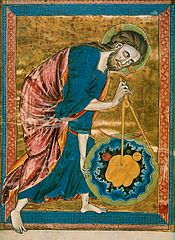
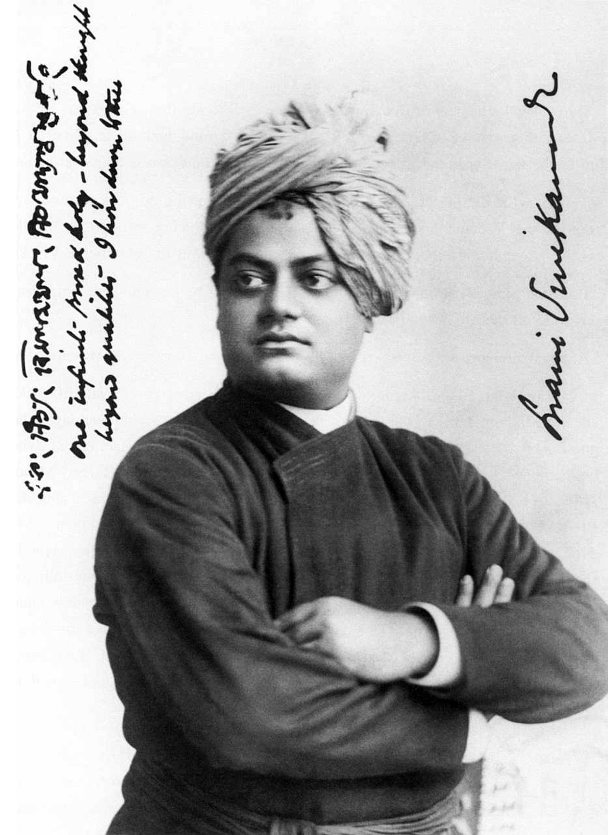
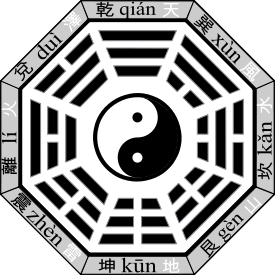
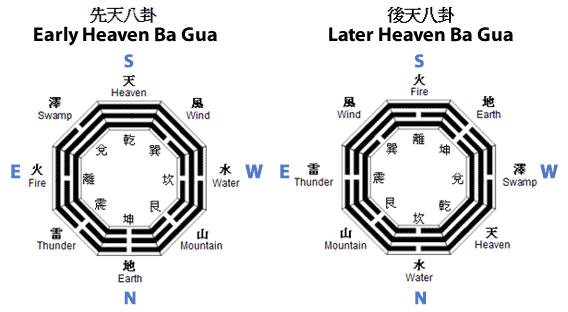
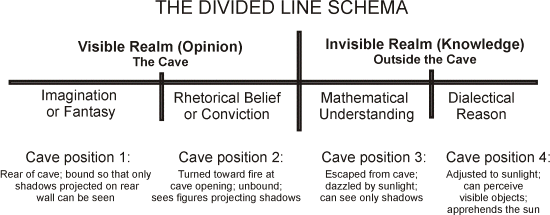
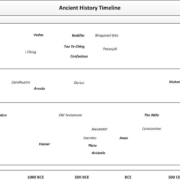
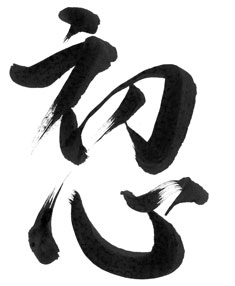
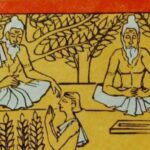
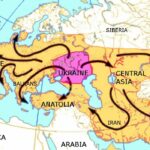
Leave a Reply
Want to join the discussion?Feel free to contribute!